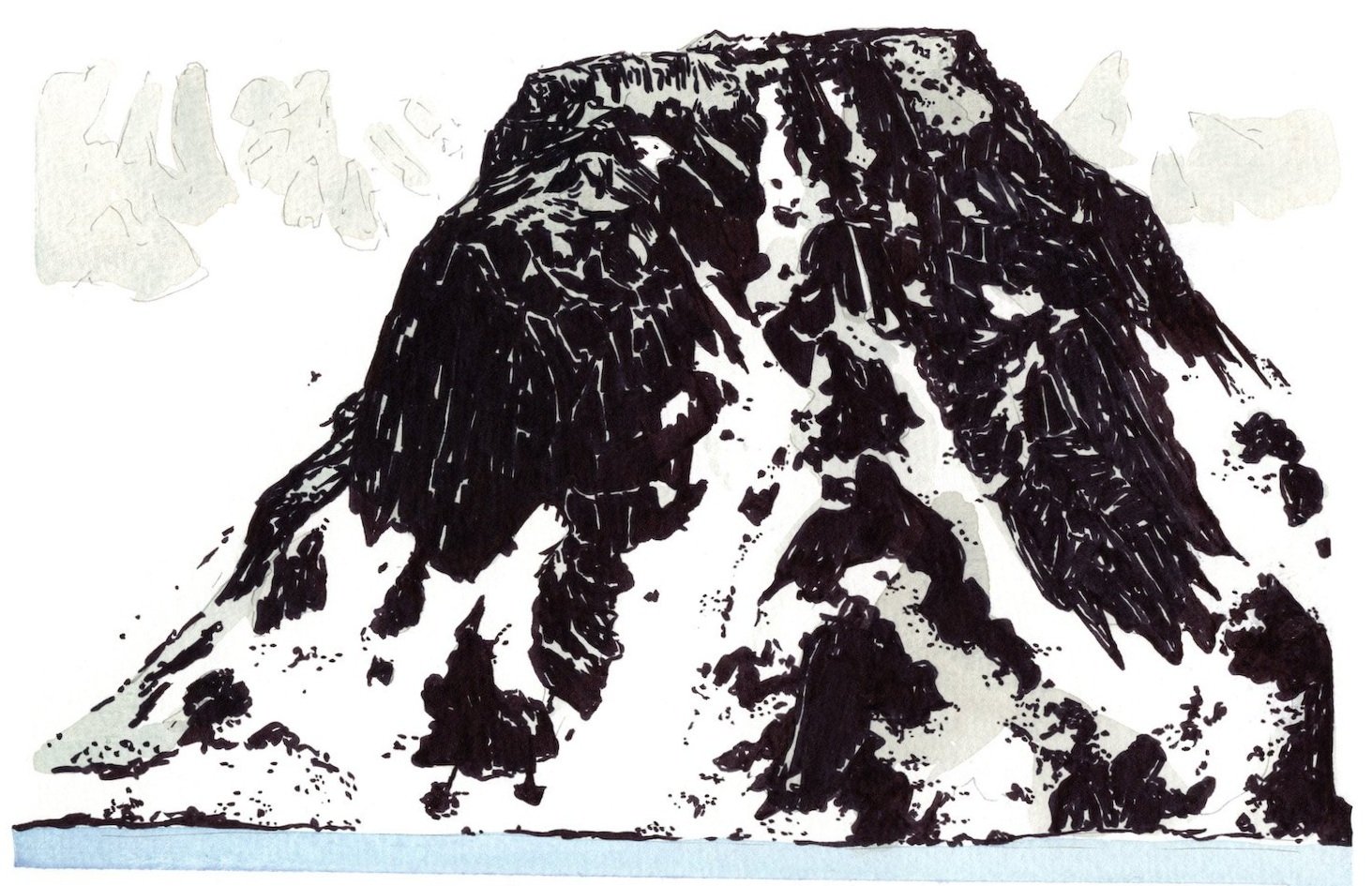From the frigid Arctic to the tropical island of New Guinea, the Department of Art History Gallery and the American Museum of Asmat Art present a joint exhibition, CHANGE, that considers the impact of climate crisis through an artistic lens.

The Arctic is often oversimplified as an environment of ice and polar bears, overlooking its vast and complex microflora, abundance of sea birds and marine life, and complex geopolitical position. Unlike its southern counterpart, Antarctica, this region has not been protected for the purposes of peace and scientific exploration. Rather, it has become a source of dispute and tension between global powers and commercial investors. The work on view here sets out to address this multifaceted existence of the Arctic.
The photography, soaked papers, collected specimens, illustrated flora and fauna, and the painted landscapes, all document the Arctic as it exists in this moment, capturing the transition and change in our world. But it is the wrapped and unraveling ice that contemplates our future. Stylistically, it resembles thread, a material created to be used in the construction of something new. Conceptually, it symbolizes our actions and the impact they have on the fate of these floating glacial remnants. Physically, thread also resembles one of the more common types of trash found in the most remote regions: rope from the commercial fishing industry.
The process of drawing the wrapped forms is on its own simple, and in its time-consuming nature, a form of meditation. It is a compilation of thousands, if not millions, of small decisions that shape the fate of the ice floating on the page. These unraveling shapes of ancient glacial ice will never again exist in this state. Even now, they are rapidly becoming a part of our currents and weather systems, dispersing around the globe.
This body of work is an invitation to take the journey through a remarkable and profoundly unique region. I hope it will offer moments of discovery, inspiration, curiosity, and the beginning of a new relationship with the Arctic and its connections on a global scale.
— Sarah Nelson
In June of 2022, I arrived on Svalbard, an archipelago in the northern most region of our planet. There I boarded a barquentine vessel, the Antigua, for an artist residency with twenty-eight other artists and scientists. We sailed north along the coastline until there was nothing between us and the absolute North Pole. CHANGE: An Arctic Journey is both an invitation into my time at sea and a response to the magnificence and rapid change in the earth’s Northern Polar Region.
All artwork by Sarah Nelson